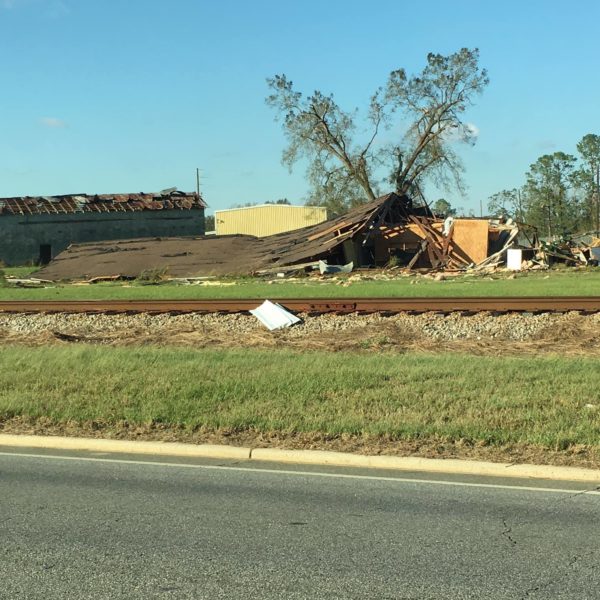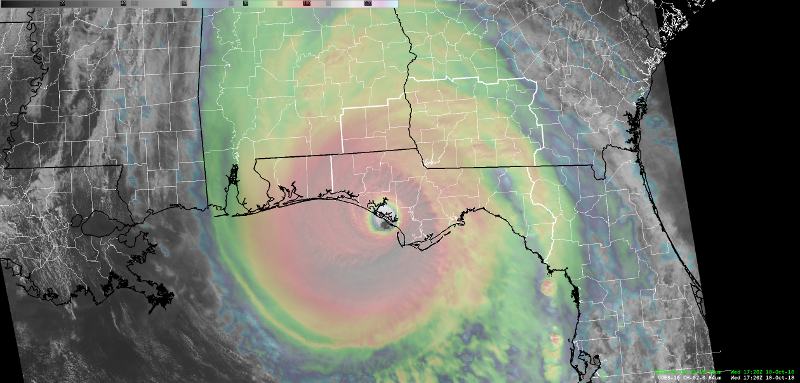The second article I ever wrote on this blog was on the local impact of Hurricane Hermine in 2016. And now, Tallahassee and the Florida Panhandle region is once again recovering from another hurricane, this one Hurricane Michael.
Hurricane Michael reached Category 4 (winds of 130-155 mph or 209-251 km/h) shortly before landfall, making it the strongest tropical cyclone to make landfall in the U.S. since Hurricane Andrew in 1992. When meteorologists started showing Tallahassee (where I live) in the projected path, people in the community started getting really anxious.
My husband and I took care of all loose items in the yard by either moving them inside or securing bigger items that could be picked up by the wind and thrown into a door or window.
But we decided to stay in our home. Granted, we live about 45 minutes away from the coast, so storm surge is not an issue for us, and our home sits near the top of one of the highest points in Tallahassee.
On the flip side, several neighbors boarded up their windows, with some of them boarding up all of their windows and doors and creating a cave-like environment. And others decided to leave town altogether.
The differences in behaviors really brought to mind this concept:
We as individuals have our own personal tolerance for risk.
First, the choice in where we live…
Some people hate the idea of living in Florida because of hurricanes. Me, personally, I choose hurricanes over tornadoes, earthquakes, and ice storms, mainly for the reason that I get advance notice to take precautions. However, my husband and I purchased a home that is NOT on or near ANY body of water, because that was one risk we were not willing to take.
(A little backstory – my husband grew up on a river here in Northern Florida and lived through a few floods over the course of his childhood. Needless to say, flooding was one risk he prefers to avoid.)
Tallahassee is not known for being impacted by hurricanes, but it is known for its canopy roads (roads where the trees meet over the roads, forming a canopy) and live oak trees.
But the down side of choosing to live in Tallahassee means that wind storms bring trees down on power lines. And yes, we lose power about once a year. Since we got tired of that happening and didn’t want to risk losing food, we decided last year to buy a small portable generator that allows us to run our refrigerator, some fans, and other small appliances. (And yes, it got put to full use in the aftermath of this storm.)
So let’s go back to Hurricane Michael.
Tallahassee was spared, with maximum sustained winds around 50 mph and gusts of 60 mph. But even with those “lower” wind speeds, 97% of Tallahassee’s electric utility customers lost power. Those in Mexico Beach, St. Marks, and other coastal towns were not so lucky. The storm caused major damage for miles and miles inland, reaching all the way into Alabama and Georgia.

But the reality is that we make decisions at work and in life all based on how much risk we personally are comfortable taking.
Plans for retirement, saving money and investments, methods of travel – these are all decisions that are based on personal risk appetite.
When we are risk management professionals and provide recommendations to executives, board members, and others, we have an obligation to take our personal preferences out of the equation. Instead, those recommendations should be based on the risk appetite and risk tolerance levels identified by the executives. Only by using the levels identified by executives can resources be allocated to the right risks based on the goals and objectives of the organizations.
Do you struggle with keeping your personal preferences out of risk management recommendations?
I want to hear from you. Please leave a comment or join the conversation on LinkedIn to share your thoughts.
And if your organization is trying improve how to incorporate risk appetite and risk tolerance into prioritizing resources to address risks, contact me to discuss your organization’s needs and goals today.









